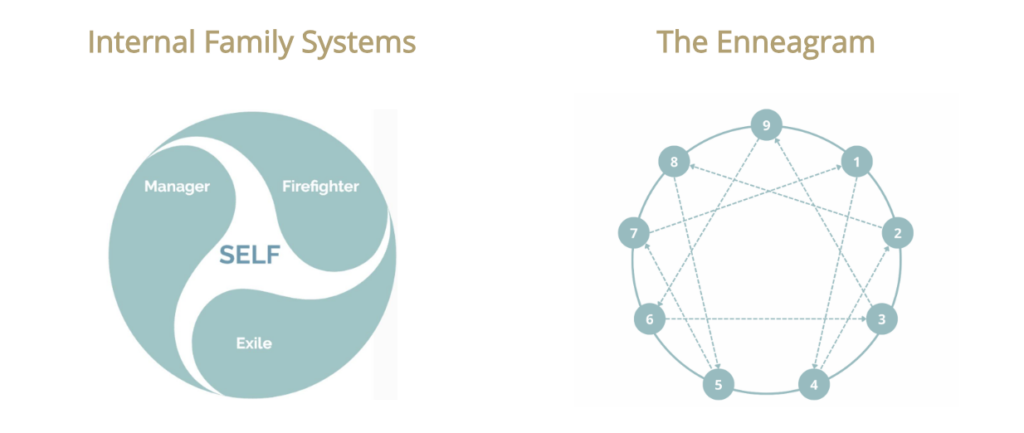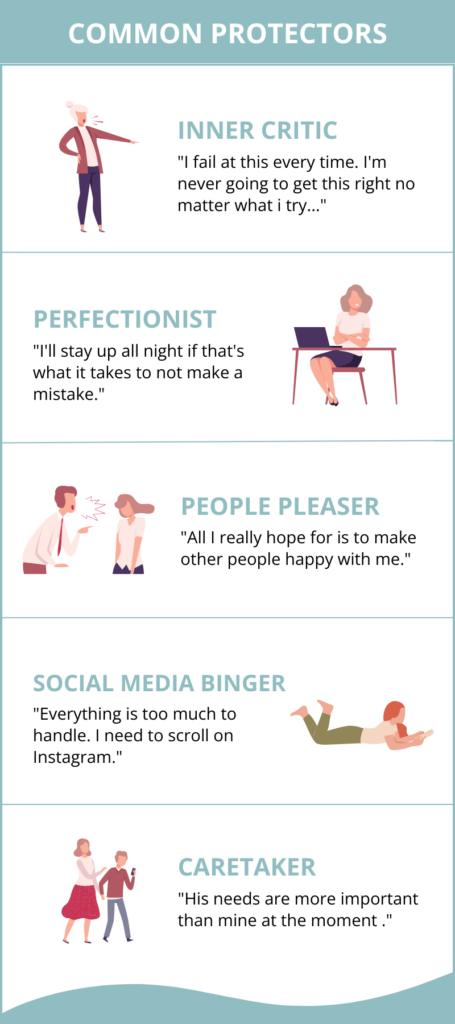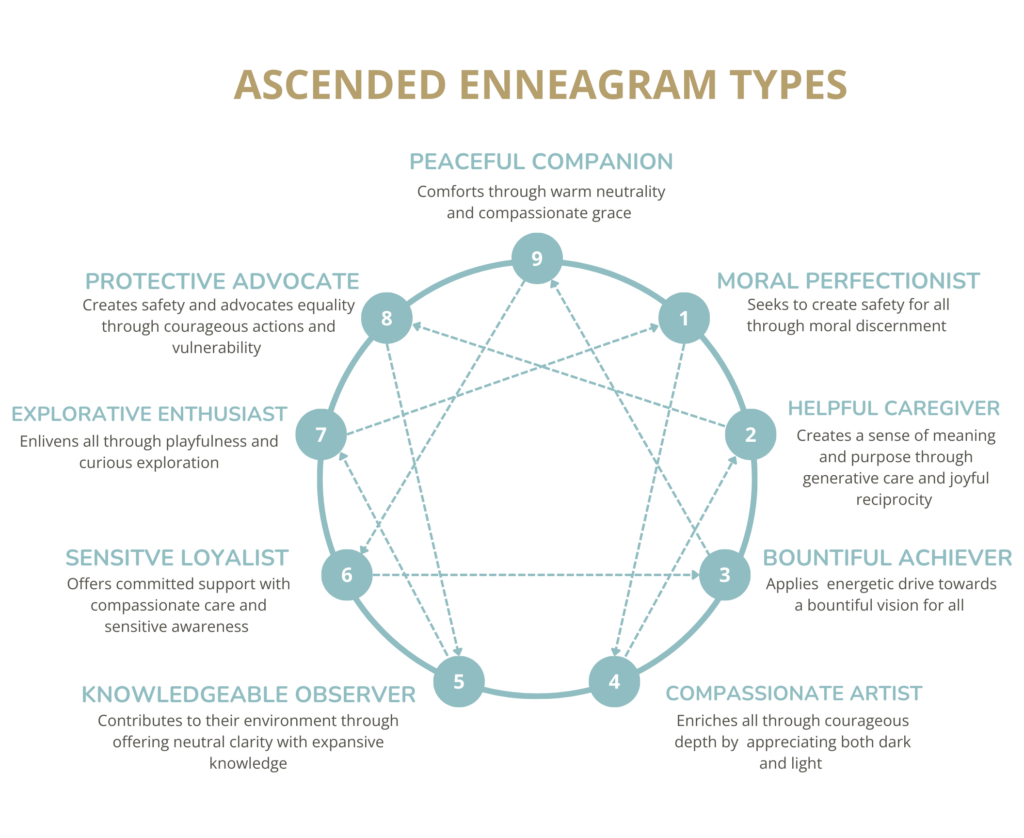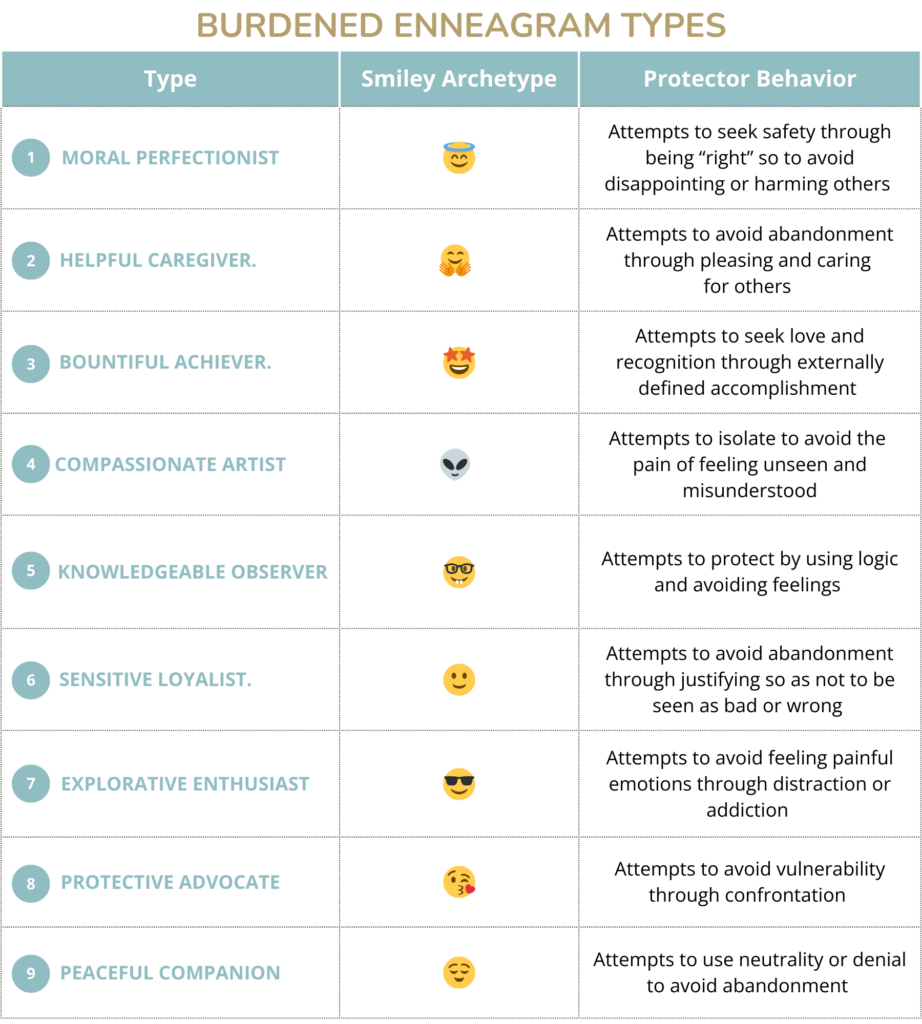This blog covers the intersection of two powerful modalities I use regularly in my coaching practice:

I will share an overview of these two modalities, but let’s first start with an example we can all recognize, to bring this to life…
Imagine you have a crucial work meeting tomorrow. In the middle of the night, one part of you wakes you up and says:
😳 ”Don’t forget tomorrow morning you need to print the presentation and rehearse your pitch, or you’ll make that mistake you keep messing up on.”
In response, another part of you quickly snaps back:
😣 “You need to stop thinking! Go back to sleep or you will feel tired tomorrow and perform poorly.”
Sound relatable? Let’s take a look to see how we apply IFS and the Enneagram, in situations like this, to feel more inner awareness and peace!
Introduction to Internal Family Systems:
Most of us had experiences that blocked us from being able to recognize and easily access our wholeness. When a challenging experience occurred, a well-intentioned part of us developed to help us manage the experience.
As we grow into different stages of life, those protective parts may not evolve with us. Eventually, they may influence our actions and beliefs in a way that hinders us from feeling safe and comfortable to be our authentic selves. A few examples of protective parts you might recognize in yourself are shown in the graphic.
Through IFS, we learn how to update and integrate those parts to reconnect with our agency, helping us make better decisions in the current environment and circumstances.
While extending appreciation and compassion for the coping strategies we developed to survive in the past, we are able to break free from the limiting beliefs that no longer serve us. We are able to reestablish ‘Self’ as the leader of our systems.

Introduction to the Enneagram
The Enneagram is a fun and playful tool for beginning self-exploration as well as for those further down the path. The Enneagram is valuable because it flexibly grows with you, differing from other tools which tend to put you in a box.
It gives us a template on what motivates us, how we perceive the world, what we value, and what habits and patterns we tend to rely on. It also shows us many paths to loosening our habits and creating more freedom, love, and peace.

If you are interested in determining your Enneagram type, I recommend taking the test here. Then read your top three types to see which fits best for you.
NOTE: the test is designed as a template not a conclusion so be sure to enjoy the explorative nature of the tool as it was designed. There is no rush or finish line. The goal is not to find the answers but to live the questions.
Combining IFS + The Enneagram
So how can we think about combining these two modalities? It’s important to start by recognizing that each type structure in the Enneagram is characterized by common protector behaviors.

Knowing and understanding Enneagram-type structures can give us clues for how to work with different parts to feel seen and unburdened. Ultimately, accessing higher levels of Self-Energy allows us to loosen our type structure and tap into the gifts of other parts.
So coming back to our example from the beginning, how do we use IFS and the Enneagram to work with these parts who are concerned about performance at the work meeting?
We can start by gaining an understanding of the part’s fear by asking each part: “How they are trying to keep you safe?” 🙃
The answer to this question will also help reveal the part’s Enneagram type. Once you know this, you have a clearer picture of what is needed to help the part move from being descended in a stressful (or burdened) state to ascending into a healthy (unburdened) state. From here you can bring in wisdom and perspective through what we refer to in IFS as Self-energy. Self-energy soothes and calms the parts by reminding them that mistakes are part of growing and learning. Even if mistakes are made, parts remain valuable to the system and won’t get shamed or exiled 😌
We also start to work on preventative solutions that will help these parts be less polarized and wake up less often by uncovering parts’ shared intentions: e.g. success in the presentation. So before going to bed we can get curious and see what both parts would need to let you sleep peacefully through the night.